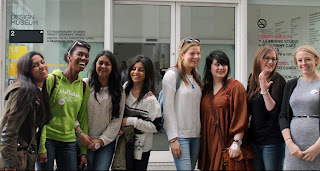On Thursday 26th September, the Siena society was
treated to a highly informative talk about entry to US colleges and
universities by Jon Harris-Gibbons of Go Campus.
In answering the question ‘Why go to study in the USA?’ it was clear that at the start of their
degrees the Americans favour breadth
over specialization. With the exception of Law and Medical students every one
spends their first two years at university studying for a liberal arts degree
(which combines a mixture of core (eg English and Maths) and elective subjects.
Only after these two years does a student ‘major’ in a single subject.
Mr Harris-Gibbons was of the opinion that UK employers value
the breadth of experience that studying abroad gives to a potential employee;
that a US degree would ‘catch the eye’ of a recruiter. (I suppose the same
could be said for Dutch, Australian and Czech degrees…)
What was interesting is that it could actually be cheaper to
study in the US than the UK! Mr Harris-Gibbons explained that in an attempt to
overcome a self-confessed insularity within their intake, private US
universities were keen to recruit foreign students. And to encourage a steady
stream of enriching Europeans they offer scholarships which could reduce the
annual bill from £20,000 to a more manageable £7,500.
Clearly one of the big questions facing any students wanting
to study in the US is ‘which college/university should I apply to and how do I
apply?’ There is an equivalent to the UCAS process called the Common App but
unfortunately only 10% of the 4000 colleges in the USA use it! To apply
elsewhere an applicant must approach each university separately. There isn’t
even a ranking system to aid the process, so clearly careful research is
needed. As regards the famous east coast Ivy League universities, Mr
Harris-Gibbons offered a word of caution: ‘I studied Foreign Languages at St
John’s College Oxford; I would never have a stood a chance of getting into
Harvard’. Whilst the Ivy League do offer bursaries, they have no need to offer
scholarships, so any applicant has to be absolutely outstanding.
Faced with the daunting prospect of applying to hundreds of
US colleges or universities (colleges offer undergraduate courses only,
universities are more research based) a UK A level student could do worse than
seek the assistance of a company like Go Campus. For a fee ($3,500) Go Campus
will do the applying for you, sending out your application to about 100
colleges or universities. From those Jon reckoned you should get about 10
scholarship offers, from which you could select two: one preferred and the
other insurance. He advised doing this in the Autumn term of Year 13 after a
student had sat her SATs (tests in Literacy and Maths), aiming to get a score
of 1000+. He strongly advised getting specialist tutoring for these SATs and
recommended the Fulbright Commission for contacts of possible tutors.
Many of the St Catherine’s girls signed up to receive his
newsletters; it will be interesting to see how many go on to further their
education ‘over the pond’.










